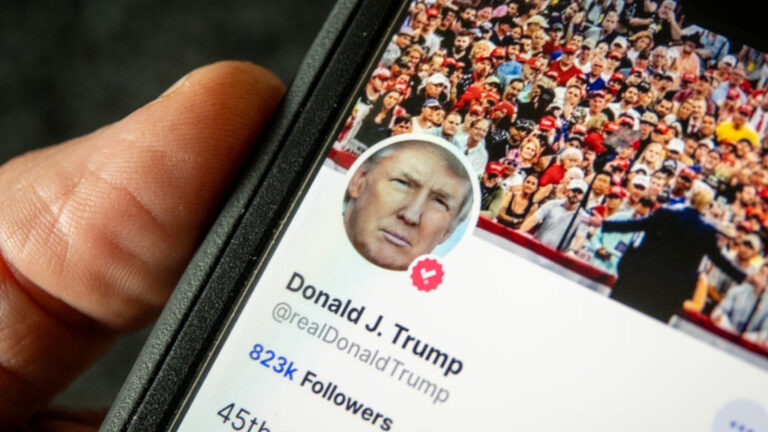Trump’s 60% tariffs could push China to hobble tech industry growth
Retaliation likely, experts say
Tech industry urges more diplomacy as it faces Trump’s proposed sweeping tariffs.
Now that the US presidential election has been called for Donald Trump, the sweeping tariffs regime that Trump promised on the campaign trail seems imminent. For the tech industry, already burdened by the impact of tariffs on their supply chains, it has likely become a matter of “when” not “if” companies will start spiking prices on popular tech.
During Trump’s last administration, he sparked a trade war with China by imposing a wide range of tariffs on China imports, and President Joe Biden has upheld and expanded them during his term. These tariffs are taxes that Americans pay on restricted Chinese goods, imposed by both presidents as a tactic to punish China for unfair trade practices, including technology theft, by hobbling US business with China.
As the tariffs expanded, China has often retaliated, imposing tariffs on US goods and increasingly limiting US access to rare earth materials critical to manufacturing a wide range of popular products. And any such retaliation from China only seems to spark threats of more tariffs in the US—setting off a cycle that seems unlikely to end with Trump imposing a proposed 60 percent tax on all China imports. Experts told Ars that the tech industry expects to be stuck in the middle of the blow-by-blow trade war, taking punches left and right.
Currently, there are more than $300 billion in tariffs on Chinese imports, but notably, there are none yet on popular tech like smartphones, laptops, tablets, and game consoles. Back when Trump last held office, the tech industry successfully lobbied to get those exemptions, warning that the US economy would hugely suffer if tariffs were imposed on consumer tech. Prices on game consoles alone could spike by as much as 25 percent as tech companies coped with increasing costs from tariffs, the industry warned, since fully decoupling from China was then, and is still now, considered impossible.
Trump’s proposed 60 percent tariff would cost tech companies four times more than that previous round of tariffs that the industry dodged when Trump last held office. A recent Consumer Technology Association (CTA) study found that prices could jump even higher than previously feared if consumer tech is as heavily taxed as Trump intends. Laptop prices could nearly double, game console prices could rise by 40 percent, and smartphone prices by 26 percent.
Any drastic spike in pricing could radically reshape markets for popular tech products at a time when tariffs and political tensions increasingly block US business growth into China. Diverting resources to decouple from China could disrupt companies’ abilities to fund more US innovation, risking Americans’ access to the latest tech at affordable prices. Experts told Ars that it’s unclear exactly how China will respond if Trump’s proposed tariffs become a reality, but that retaliation seems likely given the severity and broad scope of the looming tariffs regime. While some experts speculate that China may currently have fewer options to retaliate, according to CTA VP of International Trade Ed Brzytwa, “in terms of economic tools, there’s a lot of things that China could still do.”
How would China respond to Trump’s tariffs?
Nearly everyone—tech companies, lawmakers, and even US Treasury Secretary Janet Yellen—agrees that it would be impossible to fully decouple from China, where 30 percent of global manufacturing occurs. It will take substantial time and investment to shift supply chains that were built over decades of tech progress.
For tech companies, alienating China also comes with the additional risk of stifling growth into China markets, as China seemingly runs out of obvious ways to retaliate against the US without directly targeting US businesses.
After Trump’s early round of tariffs started a US-China trade war, China retaliated with more tariffs, and nothing the Biden administration has done has seemingly eased those tensions.
According to a November report from the nonpartisan nonprofit US-China Business Council, any “escalation of US tariffs would likely trigger retaliatory measures from China,” which could include increasing tariffs on US exports.
That could hurt tech companies even more than current tariffs already are, while spiking net job losses to more than 800,000 by 2025, the council warned, making “US businesses less competitive in the Chinese market” and “resulting in a permanent loss of revenue.” In another report from 2021, the council estimated that if the US intensifies the trade war while forcing a decoupling with China, it could ultimately decrease the US real gross domestic product by $1.6 trillion over the next five years.
The US-China Business Council declined to comment on how Trump’s proposed tariffs could impact the GDP.
In May, following Biden’s latest round of tariffs—on imports like electric vehicles, semiconductors, battery components, and critical minerals used in tech manufacturing—China immediately threatened retaliation. A Chinese foreign ministry spokesperson, Wang Wenbin, confirmed that “China opposes the unilateral imposition of tariffs which violate World Trade Organization [WTO] rules and will take all necessary actions to protect its legitimate rights,” CNN reported.
Nobody is sure how China may retaliate if Trump’s sweeping tariff regime is implemented. Peterson Institute for International Economics senior fellow Mary Lovely said that China’s response to Biden’s 100 percent tariff on EVs was surprisingly “muted,” but if a 60 percent tariff were imposed on all China goods, the country “would likely retaliate.”
Tech industry strategist and founder of Tirias Research Jim McGregor told Ars that China has already “threatened to start cutting back on access to rare earth materials,” potentially limiting US access to critical components of semiconductors. Brzytwa told Ars that “the processed materials that result from those rare earths are important for manufacturing of a variety of products in the United States or elsewhere.”
China “might be running out of room to retaliate with tariffs,” Brzytwa suggested, but the country could also place more restrictions on US exports or heighten the scrutiny of US companies, possibly even limiting investments. McGregor pointed out that China could also block US access to Taiwan or stop shipments into and out of Taiwan.
“They’ve already encircled the island recently with military weaponry, so they didn’t even have to invade Taiwan,” McGregor said. “They can actually block aid to Taiwan, and with the vast majority of our semiconductors still produced there, that would have a huge impact on our industry and our economy.”
Brzytwa is worried that if China is pushed too far in a trade war, it may lash out in other ways.
“I think what we worry about as well is that whatever actions the United States undertakes become so provocative that China decides to act out outside the economic arena through other means,” Brzytwa told Ars.
What should the US be doing?
If the US wants to succeed in safeguarding US national security and tech innovation, Lovely told Congress the country must clarify “its strategic intent with respect to trade with China” and reform tariffs to align with that strategic intent.
She said that Trump’s “whole kitchen sink” approach has not worked, and rather than being strategic, Biden has been capricious in upholding and expanding on Trump’s tariffs.
“If you try to do everything, you end up doing nothing well,” Lovely told Ars. “Rather than just vilifying China (which, granted, China deserves a lot of vilification)” and “deluding” Americans into thinking tariffs are good for them, Lovely suggested, Trump should analyze “what’s the best thing for the United States?”
Instead, when Lovely shared a report in August with the Trump campaign—estimating that it would cost “a typical US household in the middle of the income distribution more than $2,600 a year” if Trump follows through on his tariff plans, which also include a 20 percent universal tariff on all imports from anywhere—Trump’s team rejected input “from so-called experts,” Lovely said.
Lovely thinks the US should commit to a long-term solution to reduce reliance on China that can be sustained through each presidential administration. That could mean working to support decarbonization efforts and raise labor standards in allied nations where manufacturing could potentially be diverted, essentially committing to build a new global value chain after the past 35 years of China’s manufacturing dominance.
“The vast majority of the world’s electronic assembly is done in China,” McGregor told Ars. And while “a lot of companies are trying to have slowly migrated some of their manufacturing out of China and trying to build new facilities, that takes decades to really shift.”
Even if the US managed to block all imports from China in a decade, Lovely suggested that “we would still have a lot of imports from China because Chinese value added is going to be embedded in things we import from Vietnam and Thailand and Indonesia and Mexico.”
“The tariff can be effective in changing these direct imports, as we’ve seen, yeah, but they’re not going to really push China out of the global economy,” Lovely told Ars.
Consequences of a lack of diplomacy
All experts agreed that more diplomacy is needed since decoupling is impossible, especially in the tech industry, where isolating China has threatened to diverge standards and restrict growth into China markets that could spur US innovation.
“We need somebody desperately that’s going to try to bridge barriers, not create them,” McGregor told Ars. “Unfortunately, we have nobody in Washington that appears to want to do that.”
Choosing diplomacy over tariffs could also mean striking trade agreements to curtail China’s unfair trade practices that the US opposes, such as a deal holding China accountable to WTO commitments, Brzytwa told Ars.
But even though China’s spokesperson cited the WTO commitments in his statement opposing US tariffs last May, Brzytwa said, the US has seemingly given up on the WTO dispute settlement process, feeling that it doesn’t work because “China doesn’t fit the WTO.”
“It’s a lot of defeatism, in my view,” Brzytwa said.
Consumers will pay the costs
Brzytwa warned that if Trump deepens US-China trade tensions, it would likely cause ripple effects across the US, potentially constricting access to the best tech available today, which would result in limited productivity across industry.
Any costs of new tariffs “would be passed on to consumers, and consumers would purchase less of those products,” Brzytwa said. “In our view, that is not supportive of innovation when people are not purchasing the latest technologies that might be more capable, more energy-efficient, and might have new features in them that allow us to be more productive.”
Brzytwa said that a CTA study showed that if tariffs are imposed across the economy, all companies would have to stop everything to move away from China and into the US. That would take at least a decade, 10 times the labor force the US has now, and cost $500 billion in direct business investments, the study estimated. “And that’s before you get to environmental costs or energy costs,” Brzytwa told Ars, while noting that an alternative strategy relying on treaty allies and trading partners could cut those costs to $127 billion but not eliminate them.
“It wouldn’t happen in a way where there’s no cost increase,” Brzytwa said. “Of course, there’s going to be a cost increase.”
The hardest-hit tech companies by China tariffs so far have likely been small businesses with little chance to grow since they’re “paying more in tariff costs or they’re paying more in administrative costs, and they’re not spending money on research and development, or they’re not hiring new people, because they’re just trying to stay alive,” Brzytwa said.
Lovely has testified three times to Congress and plans to continue stressing what the negative impacts “might be for American manufacturers for consumers” from what she thinks are “rather extreme moves” expanding tariffs without clear purpose under both Trump and Biden.
But while Congress controls the power to tax, it’s the executive branch that controls foreign policy, and in this highly politicized environment, even well-researched studies done by nonpartisan civil servants can’t be depended on to influence presidents who are determined to use tariffs to appear strong against China, Lovely suggested.
On the campaign trail, both candidates appeared to be misleading Americans into thinking that tariffs “are good for them,” Lovely said. If Trump’s tariffs get implemented once he’s sworn back in, that will only make it that much worse if the rug gets yanked from under them and Americans are suddenly hit with higher prices on their favorite devices.
“It’s going to be like shock therapy, and it’s not going to be pleasant,” Lovely told Ars.
Trump’s 60% tariffs could push China to hobble tech industry growth Read More »










